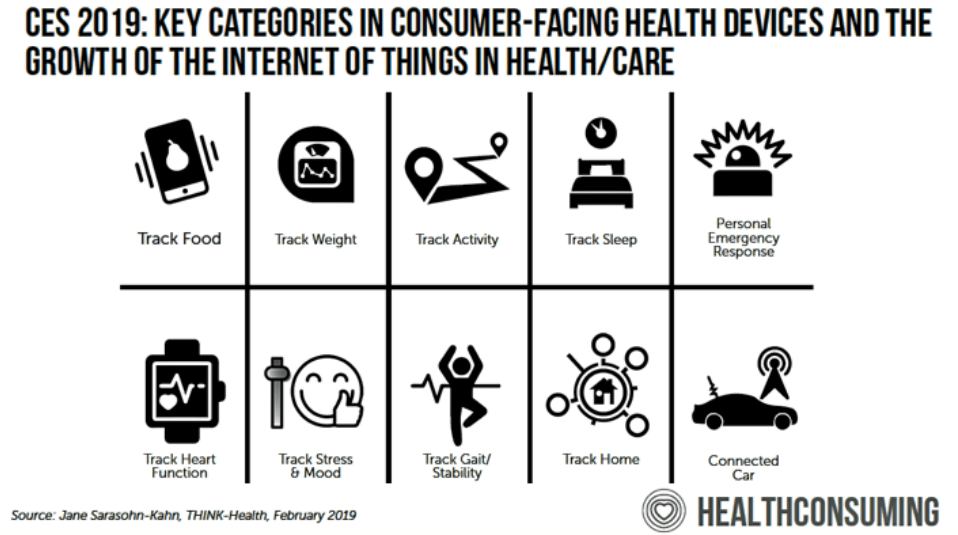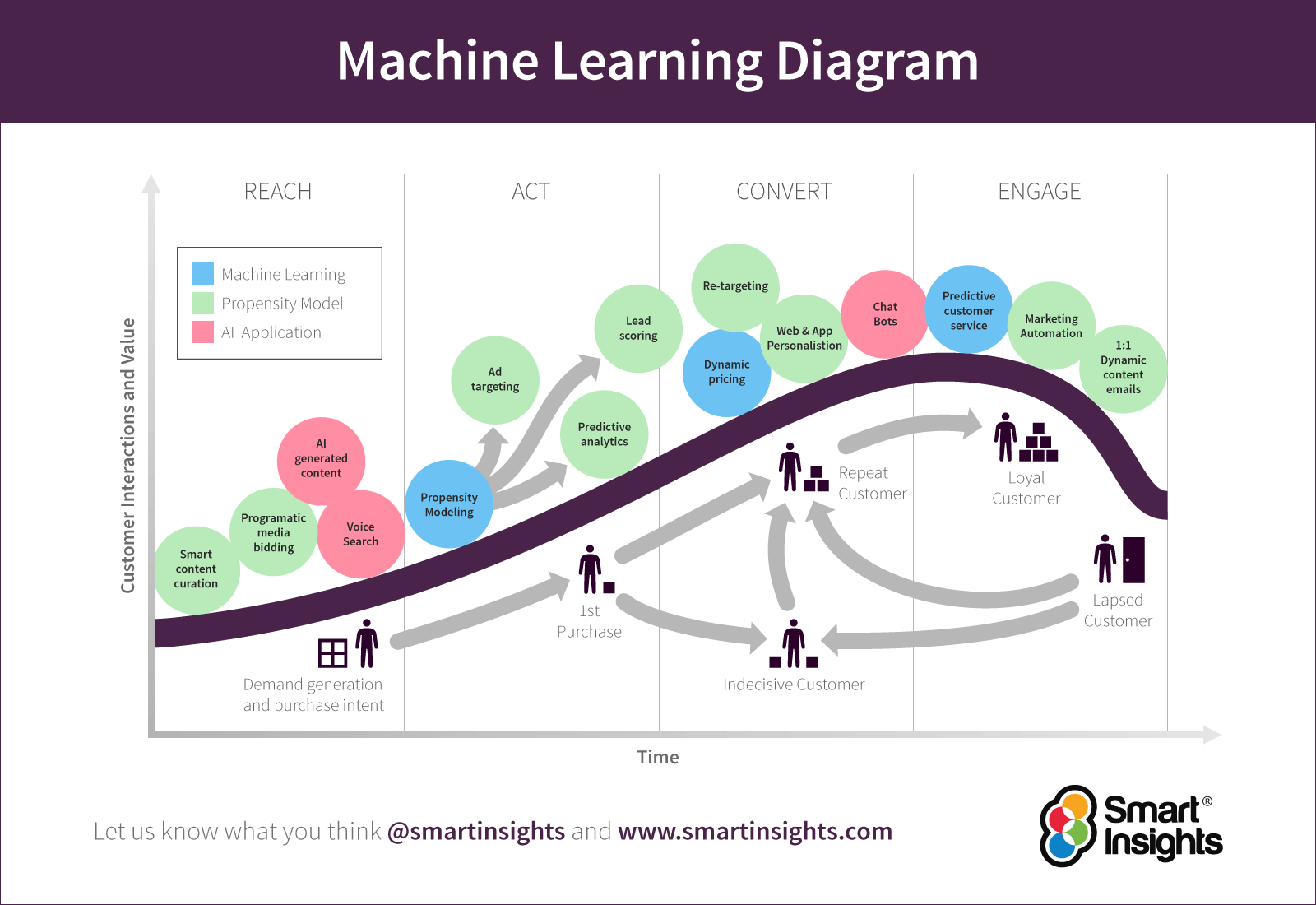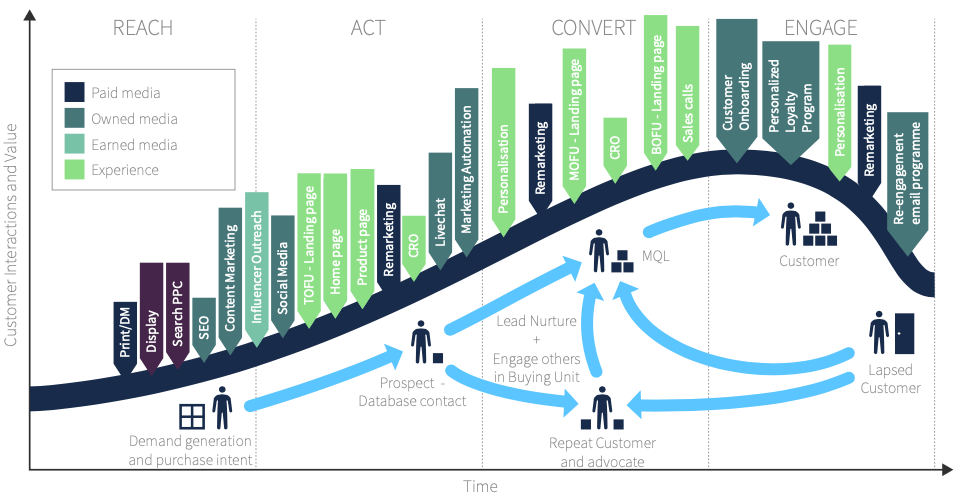Healthcare wearable devices are on the up. Pharma and healthcare MarTech unlocks new opportunities for marketing leaders to connect with customers
Our pharma and healthcare marketing trends 2021 report highlights a number of sector innovations, including wearable healthcare, to help you optimize an insights-driven marketing strategy.
Structured across our acclaimed RACE Framework structure of plan-reach-act-convert-engage, our pharma and healthcare marketing trends 2021 report details digital activities to strengthen your marketing strategy across your customers’ experiences of your brand. So you can plan, manage, and optimize your healthcare/pharma marketing funnel to drive the results you need.
Download our pharma and healthcare marketing trends 2021 report, structured across the RACE Framework, to identify new opportunities to increase high-quality leads and sales for your company, whilst accelerating your progress towards your business vision.
According to Grand View Research, the global wearable technology market size was valued at USD 32.63 billion in 2019 and is projected to expand at a compound annual growth rate (CAGR) of 15.9% from 2020 to 2027.
The growing popularity of the Internet of Things (IoT) and connected devices and a rising ‘technically sound’ population is expected to drive the demand. Cisco explains the importance of IoT and M2M when they say:
“The phenomenal growth in smarter end-user devices and M2M connections is a clear indicator of the growth of IoT, which is bringing together people, processes, data, and things to make networked connections more relevant and valuable.”
When we envisage wearables it is helpful to consider three broad categories: head (such as wearable cameras, smart glasses), body (wearable activity trackers, smart clothing), and wrist (i.e., smartwatches).
Healthcare specific wearables
Healthcare applications are summarised by this infographic:
Rising concerns of obesity and other chronic diseases have led to the adoption of wearable
products such as body monitors and activity trackers, which offer real-time information about overall health. These wearable products can offer information such as blood pressure, oxygen levels, quality and quantity of sleep, calorie intake, cholesterol levels, heartbeat monitoring, and other information required by the body for day-to-day activities.
The Internet of Medical Things (IoMT)
Thales believes that we are at a tipping point for connected medical devices with The Internet of Medical Things forecast to be worth $543B by 2025.
Healthcare solutions that leverage the power of IoT have the potential to dramatically improve patient outcomes and save lives with remote patient monitoring (RPM) – all while meeting the challenge of rising healthcare costs and an ageing population.
However, they point out that healthcare organisations need to mitigate security risks from cyberattacks against those products – putting patient data at risk and undermining confidence in the sector.
To successfully meet the needs of medical professionals, patients, and hospital purchasing departments, Thales recommend that devices will need to demonstrate the following 4 key features:
- Reliable connectivity – Devices that record and send critical data must be trusted to stay connected for extended periods.
- Compliance with privacy and security regulation – All devices must comply with privacy and security regulations such as IEC 62304, ISO 13485:2016, MDR 2017/745/EC, GDPR, and FDA standards.
- Long-lasting – Devices must be future-proofed by being designed to allow remote software or security updates that provide optimal performance over extended periods.
- Ease of use – The device must be easy for patients and doctors to connect and run with minimal intervention or set up.
The changing landscape of wearables
The COVID-19 pandemic was anticipated to negatively impact market growth of wearable devices however the outbreak has expanded the role of wearable technologies in the healthcare sector with particular efforts being implemented to use them as prompt warning systems for the virus infection.
During this time there was increasing popularity of these devices among professional athletes and recreational fitness consumers as the demand for personal fitness and wellness products increased with the closure of fitness venues.
One challenge is that there is a huge range of available smart devices including tablets, phablets, and smartphones, among others with end-users increasingly desiring to have a single compact product that could integrate all of their monitoring and computing requirements.
Healthcare wearable marketing strategy
Without a doubt, your customers will adopt healthcare wearable technology within a wide range of abilities, expectations, and needs. The complex nature of their relationship with your brand, and their wearables, means that pharma and healthcare marketers must keep their target customers at the center of all marketing technology decision-making.
Our RACE Framework offers marketers and managers a ready-made streamlined structure for planning, managing, and optimizing their marketing activities, according to their customers’ value lifecycles.
Download our pharma and healthcare marketing trends 2021 report to identify new opportunities for healthcare marketing technology, such as wearables and more within your marketing strategy.
Requirements for healthcare wearables
The increasing popularity of wearable devices is constrained by what they do and how they do it. Specifically, the most important features of wearables reside in them being:
- Unrestrictive (they have incorporated hands-free technology, which enables users to performing several activities at the same time)
- Controllable (the user has the ability to control it always)
- Attentive (technologies having various sensors and functioning modes)
- Observable (giving the opportunity to use alerts, reminders, or messages in order to attract user’s interest)
- Communicative (offering the possibility of exchanging information through various options such as Bluetooth and wireless networks)
- Unmonopolizing (there are several actions that the user can do at the same time, minimal attention being necessary for these activities).
And so while most people will be familiar with wearable devices such as smart watches, what are the opportunities for marketers to utilise these devices within the healthcare domain?
Just as mobile phones and tablets displaced the once-dominant PC, could wearable devices really push smartphones aside or will they work alongside smartphones?
The next generation of wearables
The first wearable technology devices like sports trackers, pedometers, and heart rate monitors have now been replaced by much more sophisticated products that are designed as a lifestyle aid, with apps for wellness, maps, local information, and seldom leave the wearer’s body.
With the “always on” culture, it’s no surprise that our relationship with information and technology is about to be taken to a whole new level. We expect the wearers of technology, such as Apple Watch, or other alternatives, to share more data than ever, about what they’re doing and where they are. The benefit of this for savvy marketers is that they can watch closely, build a picture of consumer habits, and even try to anticipate their next move.
Personalized offers and content could then be sent to devices, relevant to what people are doing, their interests and purchase habits. This is nothing new, as personalized offers and data analytics are commonplace with the use of beacon technology in ecommerce settings, sending offers and messaging to mobile phones, based on the precise location of a consumer in-store and what they are interacting with.
One of the key strengths of wearable technology is visibility. A device that is more visible at all times means messaging is more likely to be seen instantly and crucially at the desired time to drive some action, which is of the utmost importance to retailers and brands in such a competitive retail landscape but also for health related applications. Another benefit is in measuring and monitoring consumer location, as well as their emotions.
The ability of wearable tech to allow location to be discovered, but also enabling emotions to be measured via in-built heart rate monitors can provide insights into people’s biological responses to products and services as well as situations which could provide life saving advice for people with certain conditions.
Make content “glanceable”
In today’s hurry-up world, and especially with millennials, people are interested in right-now types of content. Companies and brands need to ensure that any communication is relevant and easily absorbed in seconds, at a glance — particularly as wearables have much less screen space.
Marketers will need to re-think their mobile marketing strategies and consider questions like:
- What information would our customers consider “just in time” and when?
- What is the most important message and how can we deliver it?
- What are the visual elements of our service or product experience?
- How can we improve the customer experience for the customer glancing at their smart watch?
Companies that offer subscription services to deliver communication to any wearable device. It is worth considering if retooling the same email and newsfeeds to yet another format is the best way to engage with your audience or whether it is better to build from the ground up.
Use the RACE Framework to plan your customer touchpoints. Wearable technology can deliver on a number of objectives from initial impressions to conversion and advocacy, so why not make sure your paid, owned, earned customer journeys are working efficiently and effectively for you.
With Smart Insights Business Membership, you’ll get access to tools and templates curated to support your pharma or healthcare business to optimize your marketing strategy.
Our pharma and healthcare marketing trends 2021 report is just one example of expert-led marketing advice and recommendations designed to help your business develop your marketing strategy and accelerate your ROI. Find our more when you download your free copy today.





